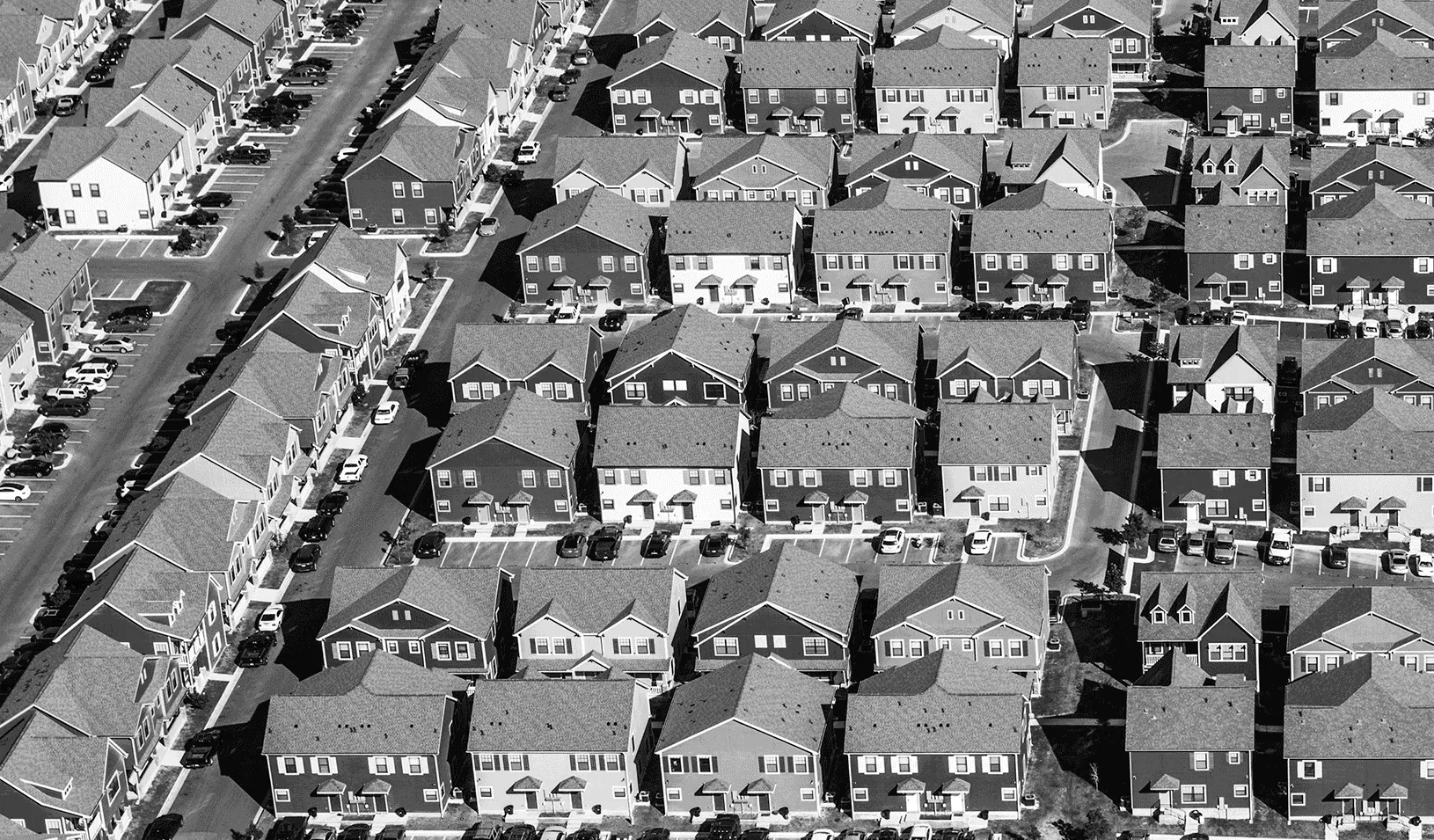Is Affordable Housing Good for the Neighborhood?
Research shows these buildings impact home prices and diversity.
September 15, 2015

Photo illustration showing low-income housing options in a neighborhood by Tricia Seibold. Photo by iStock/David Sucsy
In a lawsuit filed in 2008 and elevated to the U.S. Supreme Court this year, nonprofit Inclusive Communities Project sued the Texas Department of Housing and Community Affairs, arguing it supported racial segregation by allocating too many housing credits to develop affordable housing in poorer, predominantly black neighborhoods. The high court sided with the nonprofit in June, returning the case to the lower court.
But new research shows that the housing department may have been on to something. A study by Stanford GSB professors Rebecca Diamond and Tim McQuade shows that affordable housing development could be an effective policy to help revitalize and integrate low-income areas, Diamond says.
The two studied affordable housing projects’ impact on the surrounding neighborhoods over a 10-year span, and found that new projects in poorer neighborhoods increased surrounding home prices and reduced crime, while new projects in wealthier neighborhoods drove down home prices and decreased racial diversity.
“Perhaps counterintuitively, if you build in high-minority areas, it will actually attract higher-income homebuyers as well as non-minority homebuyers to the area,” McQuade says. “It can actually achieve to some extent a goal of integration.”
The Research
Analyzing the effects of affordable housing holds merit, considering what Americans spend on these programs. Each year, U.S. federal, state, and local governments drop more than $97 billion on housing assistance. One such program, the Low Income Housing Tax Credit (or LIHTC) provides developer incentives to build affordable housing. Launched in 1986, the program has funded about a fifth of multifamily developments. Diamond and McQuade analyzed the impact these LIHTC projects had on surrounding areas by pulling data on housing transactions, as well as homebuyer race and income information. They were able to study about 16 million transactions from 15 states around 7,098 LIHTC sites.
In low-income neighborhoods, where median incomes fell below $26,000, the researchers saw home values appreciate 6.5% within a tenth of a mile of an LIHTC project. Crime rates also fell, and more non-minorities moved into the area, increasing diversity. In higher-income neighborhoods, those with median incomes above $54,000, housing prices declined approximately 2.5% within a tenth of a mile of a project, and segregation increased (the researchers noticed no crime impact).
Why the difference? In many cases, a new building in a poorer neighborhood created a “sort of revitalization effect,” Diamond says. “These areas don’t tend to have a lot of investment in them. It makes the neighborhood appear more desirable.” That, in turn, drew more homebuyers, particularly non-minorities.
On the flip side, wealthier neighborhoods didn’t see affordable housing as an attractive amenity. And that impact rippled through the area years after construction started.
“In the high-income areas, you saw a strong housing price drop very locally, and then it radiated outward over time,” McQuade says. The price effects remain even after 10 years, Diamond adds.
Furthermore, by aggregating the housing price changes in transactions following a new development, Diamond and McQuade were able to determine how much a project was worth to the surrounding neighborhood — in other words, how much more people were willing to pay to live close to the site, or conversely, how much they’d be willing to lose to move away from it. Their analysis revealed that an LIHTC project in a low-income region was worth about $116 million to the immediate surrounding neighborhood. In higher-income areas, the new building led to a loss of approximately $17 million.
The researchers say that examining neighborhood impact is only one way to analyze affordable housing. Another method would consider personal impact to tenants. For example, another study found moving children from poor neighborhoods to higher-income ones increases their future earnings.
“In terms of the actual people who live in these buildings, it could be better to move them to better neighborhoods,” McQuade says. “What we’re saying is that the government needs to think seriously about the tradeoff of how much we are benefiting the tenants of affordable housing versus what the effects are on the local neighborhood.”
For media inquiries, visit the Newsroom.
Explore More

How Markets Can Change to Ease Economic Inequality




